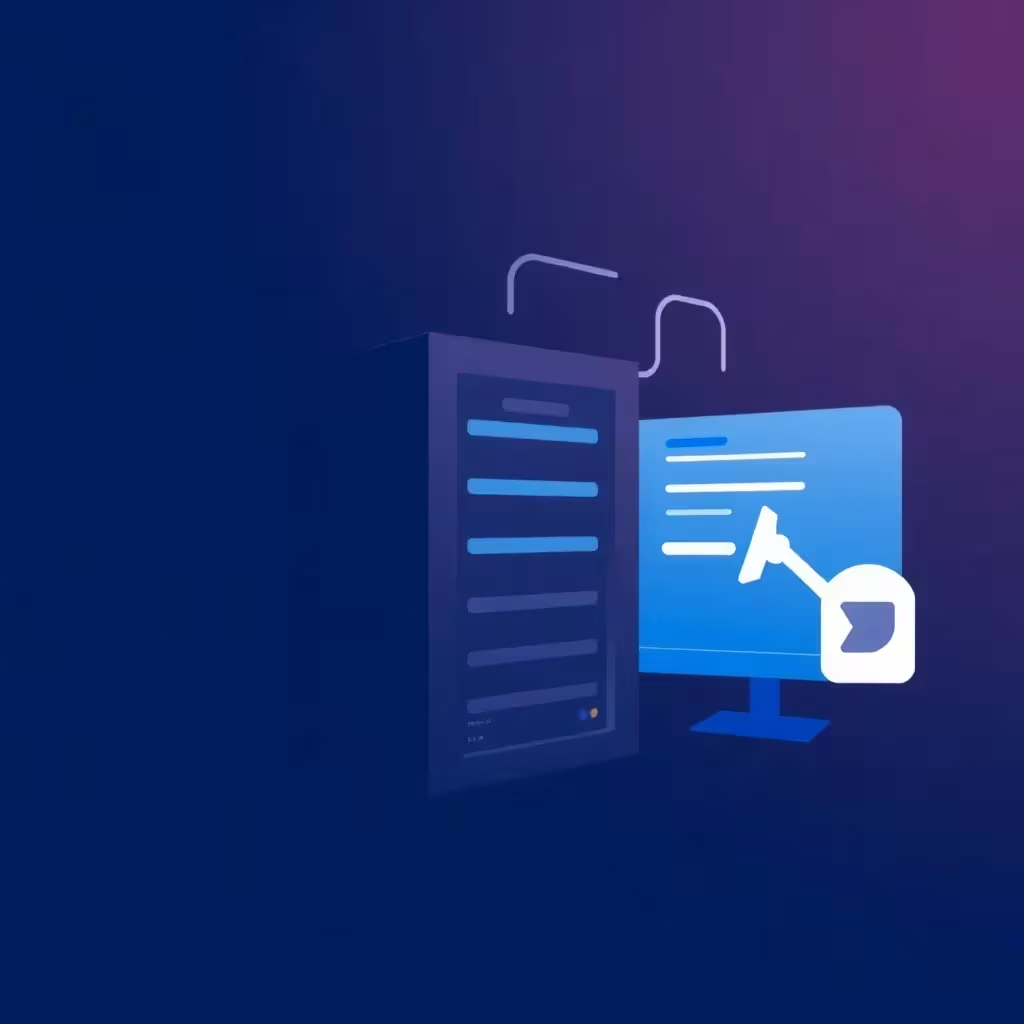Introduction to Confidential Computing
In the digital era, where data security is of paramount importance, confidential computing is becoming a ground-breaking technology. This innovative method aims to protect data not only at rest and in transit, but also during active processing. This closes a crucial gap in data security.
What is confidential computing?
Confidential computing uses special hardware technologies to create an isolated and trustworthy execution area known as a Trusted Execution Environment (TEE). In this protected area, sensitive data and applications can be processed without even privileged users or potential attackers being able to access them. This ensures an unprecedented level of confidentiality and integrity for data during its use.
How Confidential Computing works
The way Confidential Computing works is based on the encryption of data in RAM. While conventional security measures only protect data at rest (on hard disks) and during transmission (via networks), confidential computing goes one step further. It encrypts the data even when it is being actively processed by the processor. This is made possible by special processors that provide a shielded area in the main memory.
An essential aspect of confidential computing is attestation. This process ensures that the execution environment is actually trustworthy. Attestation can be used to check whether the hardware and software configuration meets the expected security standards. This creates trust between different parties who want to exchange or jointly process sensitive data.
Possible applications of confidential computing
The possible applications of confidential computing are diverse and extend across various industries.
Cloud Computing
In the cloud computing environment, confidential computing enables companies to process highly sensitive data without having to disclose it to the cloud provider. This is particularly relevant for industries such as healthcare or the financial sector, where strict data protection regulations apply.
Multi-cloud and edge computing
Confidential computing also offers new security options for multi-cloud and edge computing scenarios. It enables secure data processing across different cloud providers and protects data at the edges of the network, where it is often more vulnerable to attacks.
Cooperation between organizations
Confidential computing opens up new horizons in the area of collaboration between different organizations. It enables the secure processing of data from multiple sources without the parties involved gaining insight into each other's raw data. This is of great benefit in medical research, for example, where sensitive patient data needs to be analyzed without compromising the privacy of individuals.
Technological basics
The implementation of confidential computing requires special hardware support. Leading chip manufacturers such as Intel, AMD and ARM offer processors with integrated TEE functions. Intel's Software Guard Extensions (SGX), AMD's Secure Encrypted Virtualization (SEV) and ARM's TrustZone are examples of such technologies. These hardware solutions form the basis for the creation of secure enclaves in which confidential calculations can take place.
Challenges during implementation
Despite its advantages, confidential computing also faces challenges:
- Performance and scalability: Encrypting and decrypting data in real time can lead to a certain amount of overhead, which can affect processing speed.
- Integration into existing systems: The implementation of confidential computing often requires changes to existing applications and infrastructures.
- Standardization: Uniform standards and best practices are still being developed, which makes the interoperability of different solutions more difficult.
Standardization and industry initiatives
The Confidential Computing Consortium (CCC), an industry initiative under the umbrella of the Linux Foundation, is working to develop uniform standards and best practices for confidential computing. This is crucial for the broad acceptance and interoperability of various confidential computing solutions. Joint efforts will ensure that different technologies work together seamlessly and meet the highest security standards.
The future of confidential computing
The future of confidential computing promises exciting developments. As edge computing and the Internet of Things (IoT) become more widespread, the need for secure data processing in distributed environments will continue to grow. Confidential computing could play a key role here by enabling secure enclaves on edge devices and in IoT networks.
Confidential computing opens up new possibilities in the field of artificial intelligence and machine learning. It could enable the secure processing of sensitive training data without jeopardizing the privacy of the data sources. This could lead to more advanced and ethical AI models that can be trained on a broader database.
Advantages of confidential computing
The advantages of confidential computing are considerable and include:
- Improved security: Provides advanced protection against various types of attacks, including malware, insider threats and physical access to hardware.
- Increased confidence: By reducing the need for trust in the infrastructure and the operator, companies can process their data with greater confidence in different environments.
- Compliance and data protection: Helps organizations facilitate compliance with data protection regulations by protecting sensitive data during processing.
Implementation and best practices
For developers and IT professionals, the introduction of confidential computing means adapting existing security concepts and practices. It requires a deeper understanding of the underlying technologies and new approaches to application development and deployment. At the same time, it opens up new opportunities for innovative security solutions and business models.
A holistic approach is crucial for successful implementation. This includes:
- Selecting the right hardware and software: Identification and use of suitable TEE-capable processors and security solutions.
- Adaptation of security guidelines: Development of new guidelines that integrate the use of confidential computing.
- Training for employees: Ensure that IT staff understand the new technologies and can use them effectively.
- Redesign of business processes: Adaptation of business processes to fully exploit the advantages of confidential computing.
Legal and regulatory aspects
The legal and regulatory implications of confidential computing must also be considered. While the technology can make it easier to comply with data protection regulations, it also raises new questions. These include:
- Auditability: How can data processing processes be checked if they take place in a confidential environment?
- Responsibilities: Who is responsible when security incidents occur, especially in cloud environments?
It is important to address these issues proactively and create a legal framework that supports the secure use of confidential computing.
Inventory and conclusion
In summary, confidential computing is a promising technology that has the potential to fundamentally change the way we process and protect sensitive data. It offers a solution to long-standing security challenges and opens up new possibilities for secure data processing in various industries and use cases.
As the technology continues to develop and mature, it is expected that confidential computing will become an integral part of modern IT security strategies and make a significant contribution to strengthening data protection and data security in the digital world. Companies that adopt this technology at an early stage can secure a competitive advantage and effectively protect their data in an increasingly networked and insecure digital landscape.
Final thoughts
The implementation of confidential computing is not only a technological decision, but also a strategic one. It requires a deep understanding of the company's security needs, the selection of the right technologies and the adaptation of business processes. But the investment is worth it, as confidential computing offers robust protection for sensitive data and helps companies to gain and maintain the trust of their customers and partners.
In a world where data is seen as the new oil, protecting this data is of paramount importance. Confidential computing ensures that data is not only securely stored and transmitted, but also protected during its processing. This is a significant step towards a more secure and trustworthy digital future.



